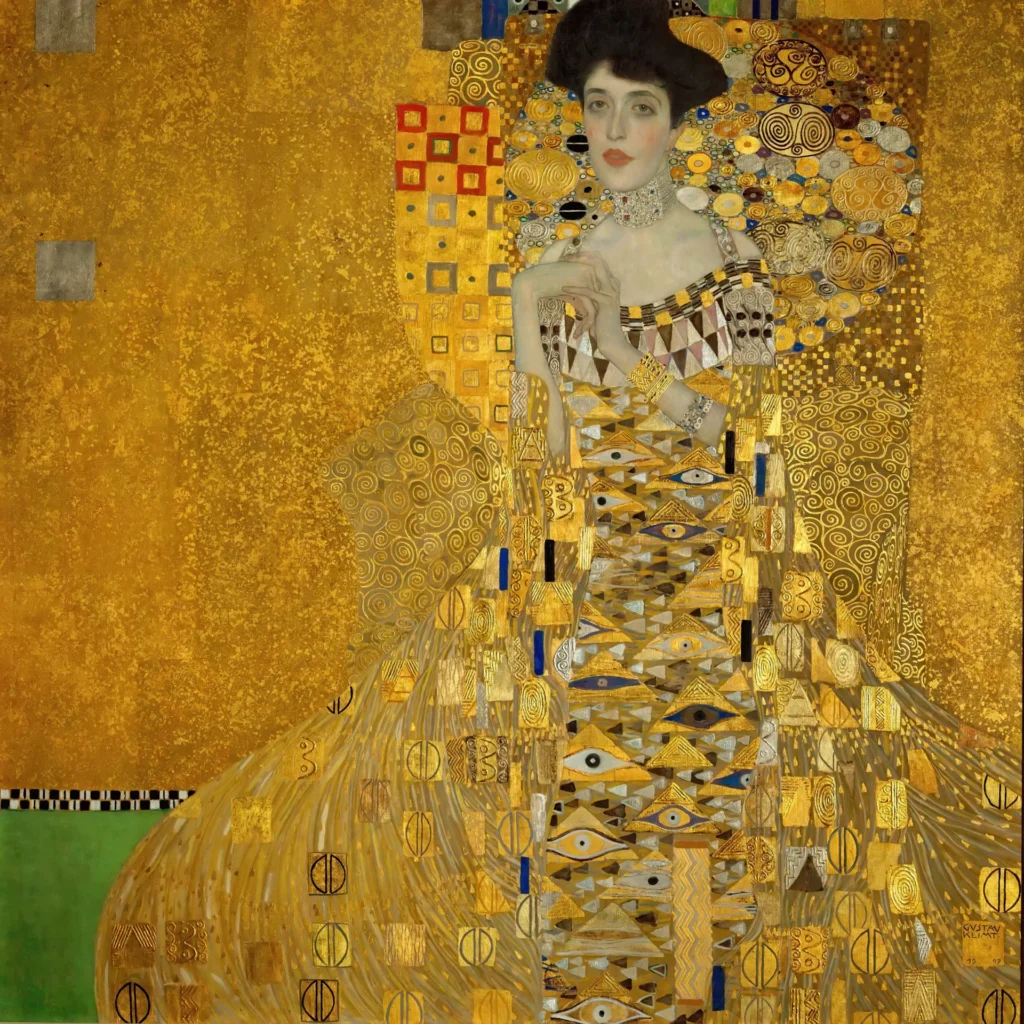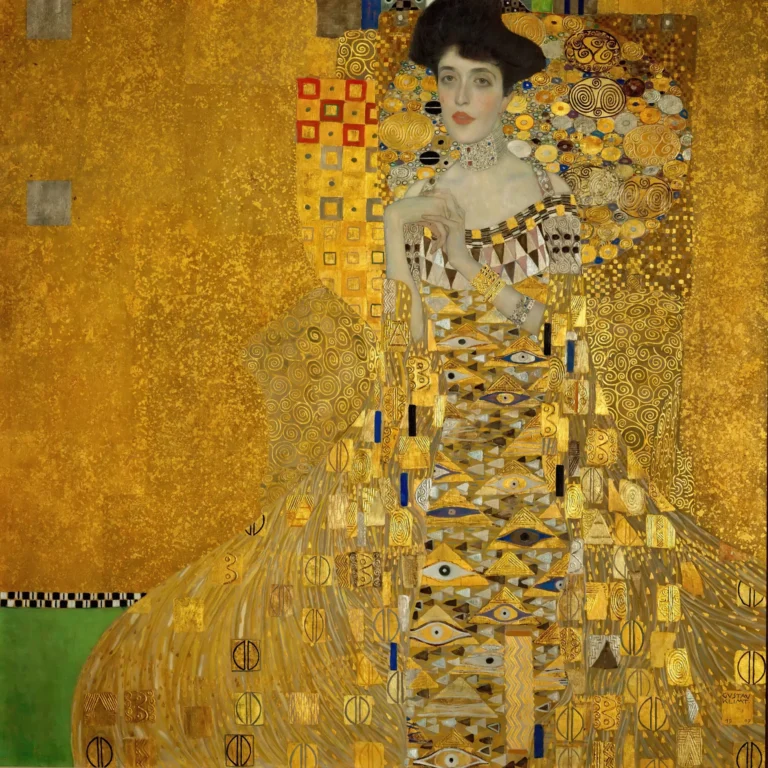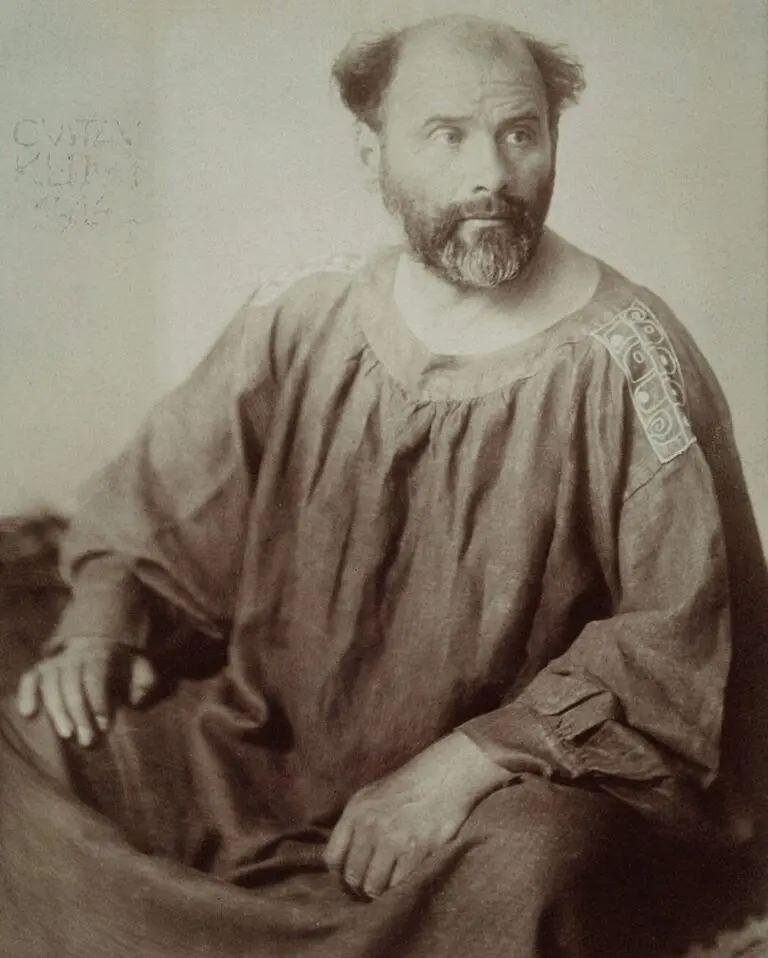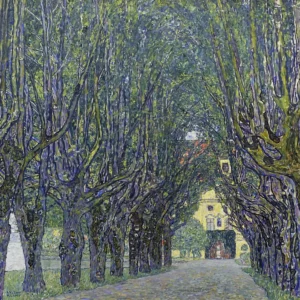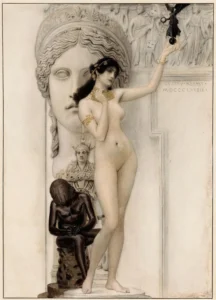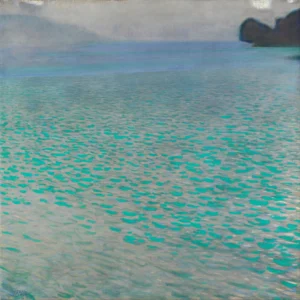Portrait of Adele Bloch-Bauer I (1907)
Created in 1907, Gustav Klimt's Portrait of Adele Bloch-Bauer I is a masterpiece that showcases his iconic Golden Style, noted for its lavish use of gold leaf and intricate ornamental details. Commissioned as a gift for Adele's parents, the painting features the subject in a richly decorated robe, surrounded by a golden halo. Its complex history, having been stolen by the Nazis and later sold for a record price, underscores its significance in both the art world and historical context.
1907
About the Artwork
The Portrait of Adele Bloch-Bauer I was commissioned by Ferdinand Bloch-Bauer as a portrait of his beloved wife, Adele, reflecting both his affection and the opulence of their life in early 20th-century Vienna. The painting serves as a spiritual and literal representation of Adele, surrounded by a golden aura that epitomizes her beauty and status. Its tumultuous history, marked by Nazi theft and a prolonged legal battle for restitution, adds layers of intrigue. The painting was eventually reclaimed by Adele's heirs, further cementing its legacy as a symbol of artistic and cultural resistance.
Did You Know
Gustav Klimt’s ‘Golden Style’ is characterized by elaborate decorative designs and the extensive use of gold leaf, which creates a shimmering effect. This technique was heavily inspired by Byzantine art and reflects Klimt’s fascination with beauty and sensuality.
Although the portrait is well-known, Adele’s identity was concealed during WWII when the painting was renamed ‘Woman in Gold’ to mislead the Nazis about its subject. Adele Bloch-Bauer was a prominent figure in Viennese society, known for her intelligence and charm, making the painting a vibrant tribute to her spirit.
In 2006, Portrait of Adele Bloch-Bauer I was sold for $135 million, making it the most expensive painting ever sold at the time. This sale underscores the painting’s monumental cultural and financial significance within the art world.




